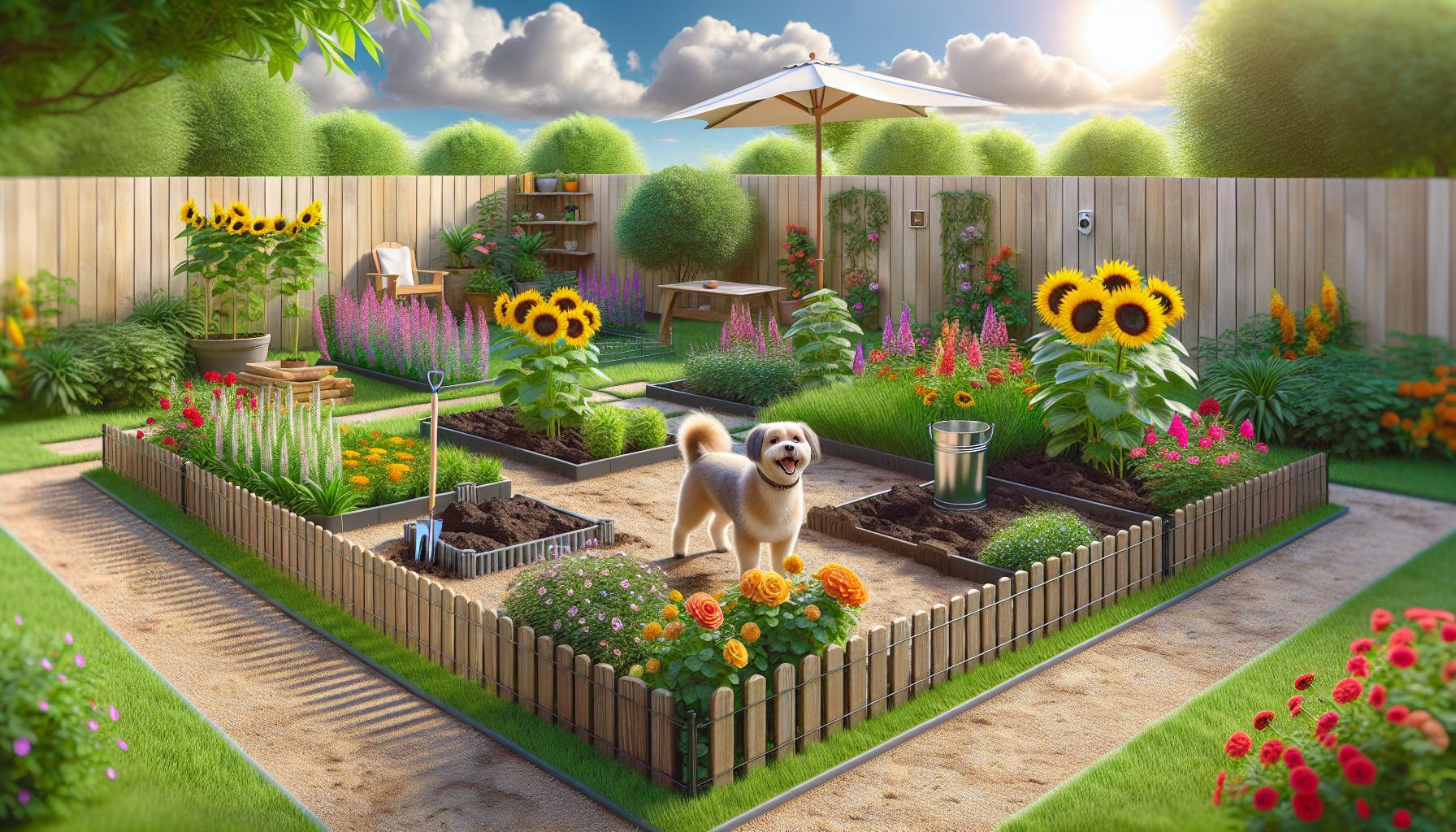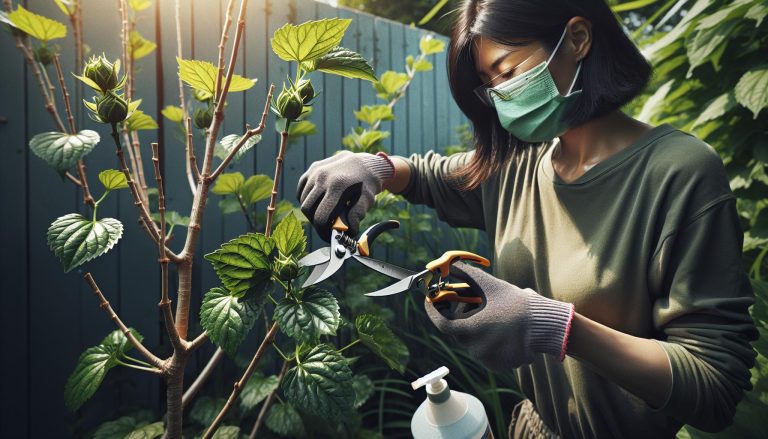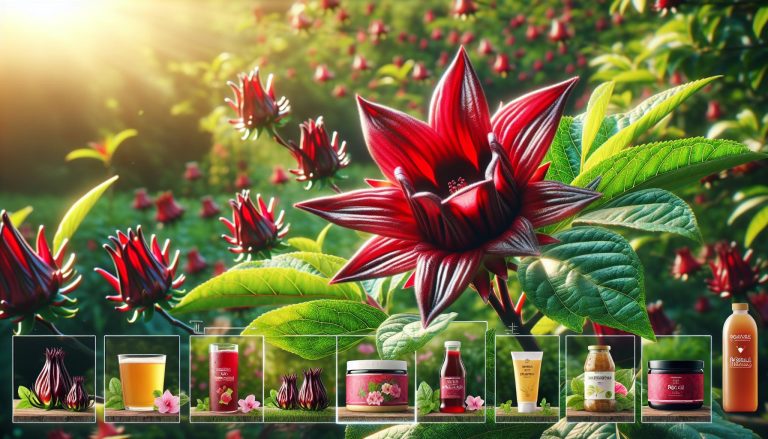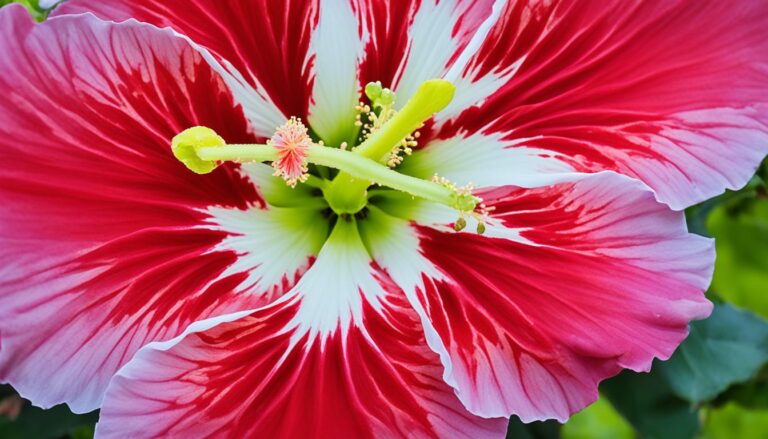Are Hibiscus Poisonous to Dogs? Safe Garden Tips for Pet Owners
As a dog owner, I’m always on the lookout for potential hazards to my furry friend’s health. Recently, I noticed my neighbor’s beautiful hibiscus plants and wondered: are these colorful flowers safe for dogs? It’s a question that many pet owners might not think to ask, but it’s crucial for keeping our canine companions safe.
Hibiscus plants are popular for their vibrant blooms and tropical aesthetic, but their impact on dogs isn’t widely known. Did you know that there are over 200 species of hibiscus? With so many varieties, it’s important to understand which ones might pose a risk to our pets. In this article, I’ll explore the relationship between hibiscus and dogs, uncovering the facts you need to keep your four-legged friend safe and healthy.
Understanding Hibiscus Plants
Hibiscus plants are diverse and captivating, with numerous species and cultivars. Their vibrant blooms and lush foliage make them popular in gardens worldwide. Let’s explore the common varieties and how to identify them in your garden.
Common Varieties of Hibiscus
Hibiscus plants come in various types, each with unique characteristics:
- Tropical Hibiscus (Hibiscus rosa-sinensis):
- Large, showy flowers in bright colors
- Evergreen shrub in warm climates
- Often grown as houseplants in cooler regions
- Hardy Hibiscus (Hibiscus moscheutos):
- Native to North America
- Dinner plate-sized blooms
- Dies back in winter, regrows in spring
- Rose of Sharon (Hibiscus syriacus):
- Deciduous shrub or small tree
- Smaller flowers than tropical varieties
- Cold-hardy and adaptable to various climates
- Chinese Hibiscus (Hibiscus rosa-sinensis):
- Similar to tropical hibiscus
- Popular in Chinese medicine and cuisine
- Often used for ornamental purposes
- Confederate Rose (Hibiscus mutabilis):
- Flowers change color throughout the day
- Large, shrub-like growth habit
- Tolerant of various soil conditions
Identifying Hibiscus in Your Garden
To identify hibiscus plants in your garden, look for these key features:
- Flowers:
- Large, trumpet-shaped blooms
- Five overlapping petals
- Central column with stamens and pistil
- Leaves:
- Alternate arrangement on stems
- Oval or lance-shaped
- Toothed or lobed edges
- Growth habit:
- Shrubs or small trees
- Upright or spreading form
- Bark (for woody varieties):
- Smooth on young branches
- Gray or brown in color
- Bloom time:
- Varies by species
- Many bloom from summer to fall
Use these characteristics to distinguish hibiscus from other plants in your garden. If you’re unsure, consult a local nursery or gardening expert for confirmation.
Toxicity of Hibiscus to Dogs
Hibiscus toxicity to dogs varies depending on the specific species. While some hibiscus plants are safe, others can pose health risks to our canine companions.
Are Hibiscus Poisonous to Dogs?
Not all hibiscus plants are toxic to dogs. The level of toxicity depends on the specific species:
- Safe hibiscus species:
- Hardy hibiscus (Hibiscus moscheutos)
- Rose of Sharon (Hibiscus syriacus)
- Potentially toxic hibiscus species:
- Tropical hibiscus (Hibiscus rosa-sinensis)
- Chinese hibiscus (Hibiscus rosa-sinensis)
The toxic compounds in some hibiscus species can cause gastrointestinal upset in dogs. However, severe poisoning is rare.
Potential Risks and Symptoms
Dogs that ingest toxic hibiscus plants may experience:
- Gastrointestinal issues:
- Vomiting
- Diarrhea
- Nausea
- Loss of appetite
- Mild behavioral changes:
- Lethargy
- Decreased activity
- Rare but possible reactions:
- Drooling
- Difficulty swallowing
In most cases, symptoms are mild and resolve on their own. However, if your dog shows persistent symptoms or appears distressed, consult a veterinarian immediately.
| Symptom | Frequency | Severity |
|---|---|---|
| Vomiting | Common | Mild to Moderate |
| Diarrhea | Common | Mild to Moderate |
| Lethargy | Less Common | Mild |
| Drooling | Rare | Mild |
I’ve observed that most dogs don’t show interest in eating hibiscus plants. However, curious puppies or dogs with pica may be more likely to ingest hibiscus flowers or leaves.
Safe vs. Dangerous Parts of Hibiscus Plants
Understanding which parts of hibiscus plants are safe or dangerous for dogs is crucial for pet owners. Let’s explore the edible components and the parts to keep away from our canine friends.
Edible Hibiscus Components
Surprisingly, some parts of certain hibiscus species are safe for dogs to consume:
- Flowers: Hardy Hibiscus and Rose of Sharon blossoms are non-toxic to dogs.
- Leaves: The leaves of Hardy Hibiscus and Rose of Sharon are generally safe.
- Petals: Dried petals from safe hibiscus varieties can be used in dog treats.
I’ve found that many dogs show little interest in eating hibiscus, but it’s good to know which parts are safe. Always introduce new foods gradually and in small amounts to avoid digestive upset.
Parts to Keep Away from Dogs
While some hibiscus varieties are safe, others contain components that can be harmful:
- Flowers: Tropical Hibiscus and Chinese Hibiscus flowers are potentially toxic.
- Leaves: The foliage of Tropical and Chinese Hibiscus should be kept out of reach.
- Stems: All hibiscus stems, regardless of species, are best avoided.
- Roots: The root system of hibiscus plants isn’t safe for canine consumption.
To protect your dog, consider these precautions:
- Fence off hibiscus plants in your garden
- Use raised beds for toxic varieties
- Train your dog to avoid the plants
- Supervise outdoor time, especially with puppies
If you suspect your dog has ingested any part of a toxic hibiscus, contact your vet immediately. Quick action can prevent serious complications.
What to Do If Your Dog Eats Hibiscus
If your dog ingests hibiscus, quick action is crucial. Here’s what you need to know to handle the situation effectively and ensure your pet’s safety.
Immediate Steps to Take
- Remove remaining plant material: Clear any hibiscus from your dog’s mouth and surrounding area.
- Assess the situation: Observe your dog’s behavior and note any immediate symptoms.
- Identify the hibiscus species: If possible, determine which type of hibiscus your dog ate.
- Collect evidence: Save a sample of the plant for identification purposes.
- Don’t induce vomiting: Wait for professional advice before attempting this.
- Offer water: Encourage your dog to drink to help flush their system.
- Monitor closely: Watch for any developing symptoms or changes in behavior.
- Prepare for vet visit: Gather relevant information about the incident and your dog’s medical history.
- Immediate contact: If your dog shows severe symptoms like excessive vomiting, diarrhea, or lethargy.
- Within 2-4 hours: For mild symptoms such as slight gastrointestinal upset or behavioral changes.
- Same day: If your dog ate a large amount of hibiscus, even without symptoms.
- Next available appointment: For small amounts ingested with no symptoms, but you want peace of mind.
Information to provide your vet:
- Hibiscus species (if known)
- Amount ingested (estimate)
- Time since ingestion
- Observed symptoms
- Your dog’s weight and medical history
Remember, it’s always better to err on the side of caution when it comes to potential plant toxicity in dogs.
Creating a Dog-Friendly Garden
Creating a dog-friendly garden involves selecting safe plants and implementing protective measures. Here’s how to make your outdoor space enjoyable for both you and your furry friend.
Safe Alternatives to Hibiscus
When looking for dog-safe alternatives to hibiscus, consider these options:
- Sunflowers: These tall, cheerful flowers are non-toxic to dogs.
- Marigolds: Bright and easy to grow, marigolds are safe for canine companions.
- Petunias: These colorful annuals add visual interest without posing a threat to pets.
- Roses: Classic and beautiful, roses are safe for dogs when thorns are removed.
- Snapdragons: These vertical blooms provide texture and are non-toxic to dogs.
I’ve found that mixing different heights and colors of these safe plants creates an appealing garden design. For ground cover, consider dog-friendly options like creeping thyme or Irish moss.
Tips for Pet-Proofing Your Yard
To create a safe outdoor environment for your dog:
- Fence off garden beds: Use low fencing or borders to keep dogs out of planted areas.
- Choose pet-safe mulch: Avoid cocoa mulch, which can be toxic. Opt for pine straw or untreated wood chips instead.
- Remove toxic plants: Identify and remove common toxic plants like azaleas, lilies, and sago palms.
- Secure compost bins: Keep compost areas inaccessible to prevent dogs from ingesting harmful materials.
- Avoid chemical pesticides: Use natural pest control methods to protect your dog from harmful substances.
- Provide shade and water: Create shaded areas and offer fresh water to keep your dog comfortable outdoors.
- Designate a digging area: If your dog loves to dig, create a specific spot for this activity using sand or loose soil.
By implementing these strategies, you’ll create a garden that’s both beautiful and safe for your canine companion. Regular inspections and maintenance will help ensure your yard remains a dog-friendly haven.
Conclusion
While hibiscus can pose risks to our canine companions it’s possible to create a beautiful and safe garden for both you and your dog. By choosing pet-friendly plants and implementing simple safety measures you’ll ensure your outdoor space is a haven for all family members. Remember to always stay vigilant and consult with your vet if you suspect your dog has ingested any potentially harmful plants. With the right knowledge and precautions you can enjoy a vibrant garden while keeping your furry friend safe and happy.







